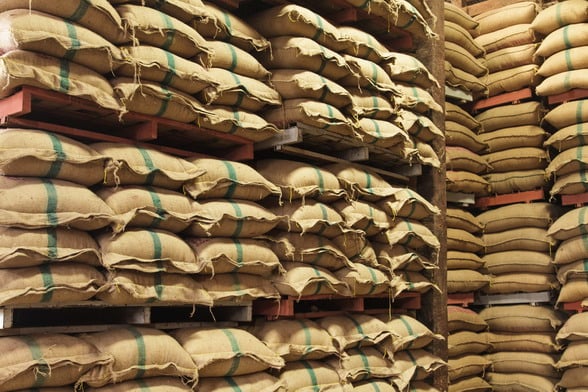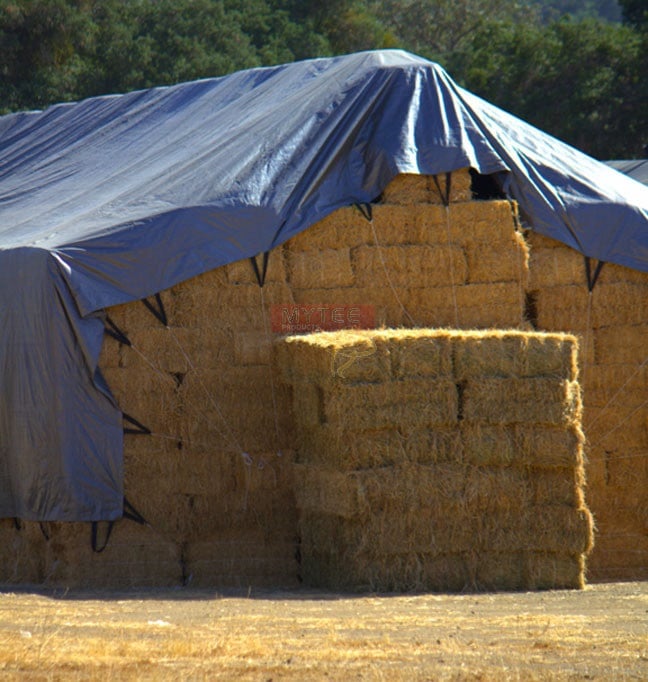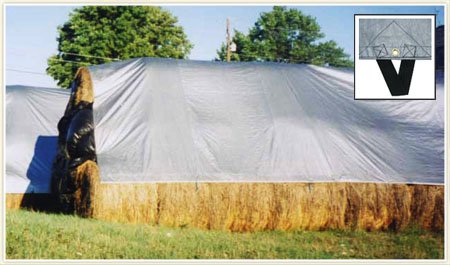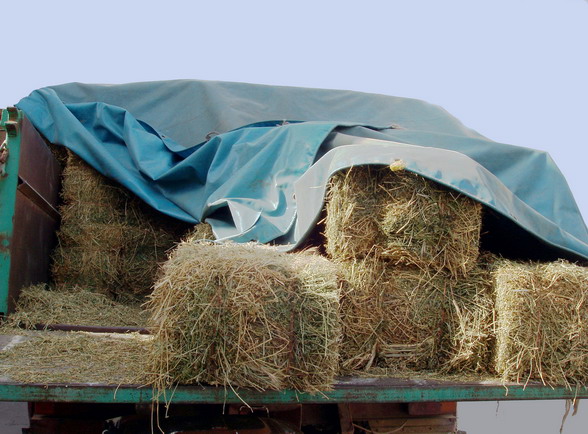If you drive through Chase, Kansas these days, you are likely to see a recently built structure that slightly resembles bridge trusses built over the top of a large, concrete box. You may not know what it is, but locals know that the structure will be used to store grain when complete. It is currently being constructed by an Illinois contractor on behalf of the Central Prairie Co-Op. The storage bin’s owners will use tarps to cover the grain in storage.
The design of the structure is such that grain can be easily loaded and unloaded without compromising the quality of the product. Hay tarps will keep out the weather and, in so doing, prevent the growth of mold and other contaminants within the grain product. Yet the tarps can be easily removed to allow the storage structure to be quickly filled using a dual-purpose chute. The chute will also be used to transfer grain from the storage area to waiting trucks. It is a well thought out design that maximizes storage capacity and efficiency at the same time.

As for the tarps, these will be made from high quality canvas. Canvas tarps are preferred over vinyl in this case because they are more breathable. The additional weight of the canvas will also make it more secure in windy conditions and better able to withstand precipitation and changing temperatures. The design calls for the use of fabric sidewalls, or ‘curtains’, that can be opened or closed as the weather dictates.
Importance of Covering Grain
Covering grain with canvas or tarps is about more than just convenience. Grain is susceptible to different kinds of mold and bacteria growth that could make the product unsuitable for human or animal consumption. Moisture encourages that growth. Keeping the grain dry reduces the risk of contamination and keeps the eventual selling price of the product as high as possible. It also prevents grain fires.
Though it may seem counter intuitive, grain with a moisture content that is too high can spontaneously combust. Once again, it comes down to the growth of bacteria and mold. The right combination of water and oxygen encourages microbial growth within the grain. As bacteria grows and multiplies, it produces heat that is then trapped within the grain. The heat can build up to a point of igniting the grain.
It is for these same reasons farmers cover their hay after harvesting it. They choose tarps rather than out buildings because tarping is a more cost-effective solution that also gives the farmer more flexibility in how his/her land is used when hay storage is not required. Tarps are easy to apply, easy to store and inexpensive enough that they do not significantly affect the farmer’s budget.
Mytee Products carries a full line of vinyl hay tarps in 10 different sizes. Each of our hay tarps is made with heavy-duty polyethylene fabric that has been UV treated. If you need canvas tarps instead, we carry those too. All are made with 100% duck cotton canvas for maximum breathability and durability.
Sources:









